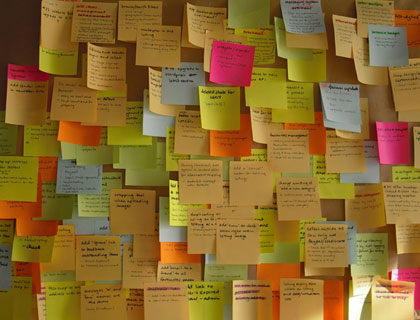These 2011 tips on assessing attention in an online learning context could work for any of our Zoom/Teams meetings now a days. It reminds me of the red-green-yellow cards that Jerry Michalski used to use at his F2F retreats. (Green – keep going, Red – Stop, enough! Yellow – I have a question). I’m going to try this next online meeting I host!
Howard has been working with his students on something that he calls “Infotention” (yup! there’s another one!) – developing your attention skills, training your attention span, and learning how to use IT skills (RSS feeds, persistent news search, and dashboards) to support your attention. As Howard put it, it’s critical to use the information that’s flowing into you in a way that allows you to make faster and better decisions. Asking yourself, for example…Ignore or attend? Open a tab for later? What are the right spatial arrangements (highest priority on the left, most frequently updated is on the top). He tries to help his students match their attention to the tool set, to start small and cultivate habits. He also cautions that there are days we must recognize that we need to get something specific done and therefore must be mindful of how your attention is spent. Set a goal and then regularly, through the day, ask yourself, is what I am doing now bringing me closer to my goal for the day?
He described an interesting (very low tech) activity he does with his students using yellow, orange and red post-it notes. A gong goes off at irregular intervals and, at that point, students write down what they were thinking about on the appropriate colored post-it notes. Yellow if the thought was on task, orange if it tangential to the task at hand, and red if it was off task. The post-its get assembled in a common spot on the board (this could be done online as well) so that the entire class can track its collective “infotention”.
